Rocks of Eaton Canyon
The San Gabriel Mountains are characterized by steep slopes, deep canyons, and sharp ridges. They are young mountains and have been uplifted from their surroundings by faulting, or earthquake movements. Some of the rock types in Eaton Canyon have been dated at well over two billion years old!
Because of earthquake activity, the mountains are composed of shattered rock which is rapidly eroding. Heavy rains cause sand and rocks to be washed down to lowlands and basins. This water-transported rock and sand is called “alluvium”. Because alluvia (plural of “alluvium”) are porous and well-drained, the upper soil becomes quite dry only a few days after a rainstorm. The deeper levels of the soil remain moist most of the year, permitting plants with deep roots to reach limited quantities of water.
Soil is vital to the plants of the ecosystem because it acts as a storage reservoir for water and minerals, and because it contains oxygen, which plants and animals of the upper soil layer (humus) use in breathing.
There are two types of rock in Eaton Canyon – metamorphic and igneous. The third type, sedimentary, is not found here, but is abundant in places such as Vasquez Rocks.
Metamorphic Rock

Muscovite Mica Schist is very silvery from the fine grains of mica oriented roughly parallel It contains small, round, brown garnet crystals Schists have the quality of breaking off in thin layers. Silver flakes can be peeled off with a fingernail.

Biotite Mica Schist is similar to the Muscovite Mica Schist above, but is very dark and lustrous. The dark, sparkly flakes can be peeled off with a fingernail.
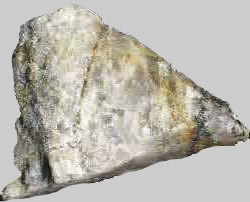
Gneiss can be easily recognized by its alternating layers of light and dark, which are formed by heat and pressure. This is a course-textured rock with minerals in parallel streaks of light and dark grey.
Igneous Rock
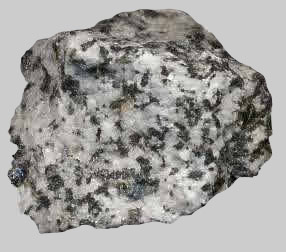
Wilson Quartz Diorite has a granite-like texture and is whitish, with very small black crystals. It is also called “salt and pepper” rock because of its black-and-white speckled pattern. Specimens found in Eaton Canyon come from the Mount Wilson area.
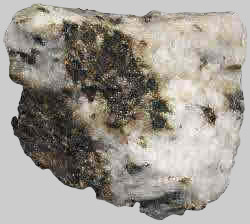
Lowe Granodiorite has a granite-like texture and is whitish, with small clusters of black crystals which give it the appearance of a Dalmation. >Specimens found in Eaton Canyon come from the Mount Lowe area.
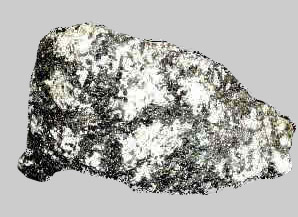
Hornblende Gabbro has a granite-like texture and is dark gray, with deeply-enmeshed whitish crystals.
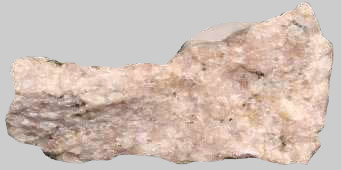
Granite Pegmatite is pinkish with white areas, and has a large, angular crystal structure. The pinkish color in this feldspar is due to its potassium content.
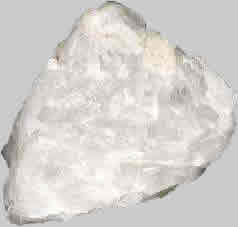
Milky Quartz is formed by silica, precipitated out of steam as magma was cooling It is formed of large crystals with flat planes, and is white and nearly translucent. The whitish crystals are nearly translucent.
